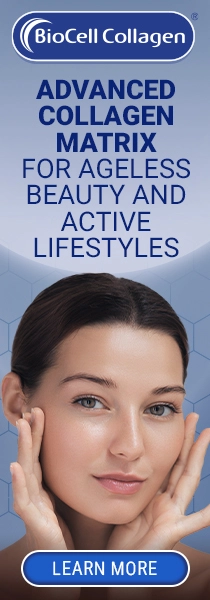Sirio webinar preview: Highlighting a new era of creatine supplementation
Key takeaways
- Today’s health-conscious population, which stays informed about nutrition trends through social media, is driving the resurgence of creatine. Brands can meet this broader audience by offering formats that deliver both efficacy and an enjoyable consumer experience.
- The scientific landscape around creatine has expanded dramatically with new studies uncovering benefits that extend beyond muscle strength, encompassing cognitive performance, energy metabolism, and healthy aging.
- Innovative delivery systems — particularly gummies — allow creatine to feel more like a wellness ritual than a performance supplement.
Creatine is experiencing a comeback, driven by a shift in consumer behavior, according to Sirio, a global contract development and manufacturing organization specializing in nutraceuticals and dietary supplements. The company believes this comeback is not just among athletes, but across lifestyle consumers seeking enhanced energy, focus, and performance.
In Sirio’s forthcoming webinar, experts will explore key market trends driving this renewed interest, review the expanding body of scientific data behind creatine’s multifaceted benefits, and discuss how new formats, such as creatine gummies, are shaping the future of supplementation.
Nutrition Insight speaks with Janine Barlow, head of R&D at Sirio, ahead of the webinar, titled “The new era of creatine: From lab to lifestyle,” about the evolution of creatine as a dietary ingredient. You can sign up for the webinar, scheduled for December 3, 2025, here.
What’s behind creatine’s sudden shift from a gym-only supplement to a lifestyle essential embraced by consumers seeking energy, focus, and everyday performance?
Barlow: Firstly, we’ve seen a surge in interest in sports and sports nutrition over the past few years. More people are training regularly, tracking their performance, and seeking effective, science-backed supplements. And because creatine is one of the most proven and fundamental ingredients in sports nutrition, its popularity has grown naturally alongside this trend.

Secondly, the scientific landscape around creatine has expanded dramatically. New studies have uncovered benefits that extend far beyond muscle strength, encompassing cognitive performance, energy metabolism, healthy aging, and overall daily vitality. As this research becomes more widely communicated, consumers outside the traditional sports segment are starting to see creatine as a daily health ingredient rather than a gym-only supplement.
 As more people care about performance, and science shows broader health benefits, creatine moves from a niche sports product to a lifestyle essential.Together, these two forces — more people caring about performance, and more science showing broader health benefits — have pushed creatine from a niche sports product to a lifestyle essential.
As more people care about performance, and science shows broader health benefits, creatine moves from a niche sports product to a lifestyle essential.Together, these two forces — more people caring about performance, and more science showing broader health benefits — have pushed creatine from a niche sports product to a lifestyle essential.
How is new scientific research reshaping our understanding of creatine’s benefits far beyond muscle strength — and what does this mean for future formulations?
Barlow: New scientific research is really expanding how we think about creatine. For a long time, it was seen almost exclusively as a muscle-strength ingredient. But newer studies are showing that creatine plays a much broader role in cellular energy, and that has opened up entirely new areas of benefit. We now have evidence supporting creatine’s impact on cognitive performance, mental fatigue, mood, and resilience during periods of stress or sleep deprivation.
There’s also growing interest in its role in healthy aging, particularly in maintaining muscle function and supporting overall vitality as we age. These findings are helping creatine move from a “gym supplement” to a whole-body wellness ingredient. For future formulations, this shift is huge. It means brands can start tailoring creatine to different consumer needs, such as cognitive support formulas, healthy aging or mobility-focused blends, stress, energy, and resilience products, lifestyle-friendly formats like gummies, hydration mixes, and RTDs, and creatine plus synergistic ingredients (e.g., electrolytes, B-vitamins, or adaptogens).
Science is unlocking new benefits, which in turn are driving entirely new use cases and product formats. Creatine is no longer one-dimensional. It’s becoming a versatile ingredient for everyday wellness, not just performance.
Why are creatine gummies becoming one of the fastest-rising supplement formats, and what technical hurdles must formulators overcome?
Barlow: Creatine gummies are becoming one of the fastest-rising supplement formats because they make creatine far more accessible, convenient, and lifestyle-friendly than traditional powders. They appeal to consumers who want a simple, enjoyable format — something easy to take daily, without the need for mixing, shaking, or the “hardcore gym” association that powders sometimes carry. This increases the attraction of the category to entirely new users, especially women and general wellness consumers.
 Innovative delivery systems — such as gummies — enable creatine to feel more like a wellness ritual than a performance supplement.But developing an effective creatine gummy is technically challenging, and only a few manufacturers can do it well.
Innovative delivery systems — such as gummies — enable creatine to feel more like a wellness ritual than a performance supplement.But developing an effective creatine gummy is technically challenging, and only a few manufacturers can do it well.
Key formulation hurdles:
- High dose requirement: Creatine requires a meaningful daily dose, typically around 3 g.. Fitting that into gummies — while keeping the serving size reasonable — requires careful optimization of gummy weight and intelligent formulation design.
- Taste and texture challenges: Creatine can bring bitterness, chalkiness, and grittiness. Creating a gummy that delivers both efficacy and a pleasant sensory experience requires sophisticated taste-masking tools and controlled processing.
- Stability is the biggest challenge: Creatine can degrade into creatinine over time, particularly under high temperatures, humidity, or improper storage conditions. This makes stability the most critical technical hurdle.
Which market trends are driving creatine’s comeback, and how can brands position themselves to meet the expectations of a broader, more wellness-driven audience?
Barlow: More people than ever are engaging in regular sports, fitness, and active lifestyles. With that comes a rising awareness of performance nutrition— and creatine naturally sits at the center of that conversation because it’s one of the most researched and effective ingredients in the category.
This trend is further amplified by social media, where fitness creators, health educators, and everyday users openly share their routines and results. Creatine has become part of the broader “healthy lifestyle” movement, not just a supplement for bodybuilders. That visibility has made the ingredient approachable for a much wider audience.
For brands, the opportunity lies in making creatine fit seamlessly into everyday routines. A broader consumer base expects a convenient, enjoyable format rather than a traditional tub of powder. This is where format innovation becomes critical.
 Barlow says that research supports creatine’s role in cellular energy, with new evidence supporting its impact on cognition, mood, and mental fatigue. Creating pleasant, easy-to-take formats — such as gummies — helps consumers build consistent habits and makes creatine feel less like a sports supplement and more like a daily wellness ritual. Gummies, in particular, can play a significant role in expanding the category, as long as brands ensure trust and credibility through proper dosing, stability, and rigorous quality testing.
Barlow says that research supports creatine’s role in cellular energy, with new evidence supporting its impact on cognition, mood, and mental fatigue. Creating pleasant, easy-to-take formats — such as gummies — helps consumers build consistent habits and makes creatine feel less like a sports supplement and more like a daily wellness ritual. Gummies, in particular, can play a significant role in expanding the category, as long as brands ensure trust and credibility through proper dosing, stability, and rigorous quality testing.
Creatine’s resurgence is driven by a more active, health-conscious population and the power of social media — and brands can meet this broader audience by offering formats that deliver both efficacy and an enjoyable consumer experience, helping users stick with creatine long term.
How can supplement developers elevate creatine from a functional staple to a premium, lifestyle-driven product that resonates across demographics?
Barlow: Creatine can absolutely evolve from a purely functional sports ingredient into a premium, lifestyle-driven product — and the key is to rethink the entire consumer experience, not just the dose.
To resonate across demographics, creatine needs to move beyond the traditional image of scoops and shakers. Today’s wellness-focused consumers seek products that seamlessly integrate into daily life, are enjoyable to take, and embody the same sophistication they expect from modern nutrition and beauty brands.
Format is the most significant lever. Innovative delivery systems — such as gummies — enable creatine to feel more like a wellness ritual than a performance supplement. When developers create formats that taste great, are easy to take, and integrate naturally into routines, they open the door to new users: women, beginners, older adults, and people seeking everyday energy and vitality rather than muscle gains alone.
Ultimately, supplement developers can elevate creatine by merging science-backed efficacy with a premium consumer experience. When creatine feels good, fits daily life, and is backed by trust and transparency, it becomes a lifestyle essential with broad appeal across demographics.















